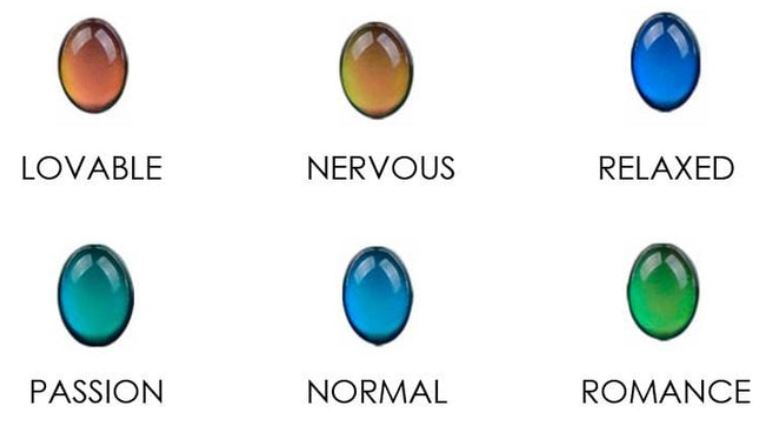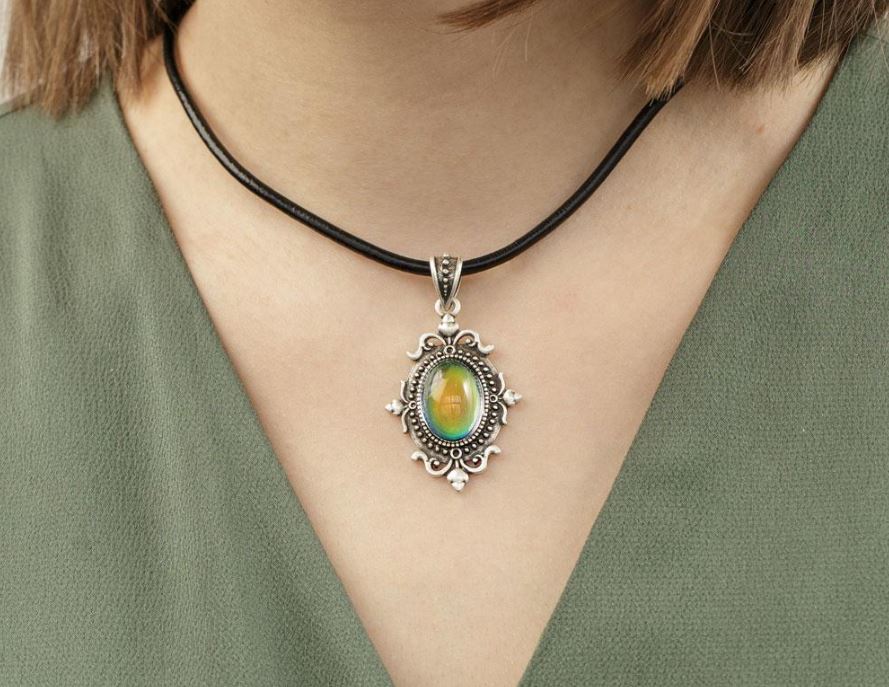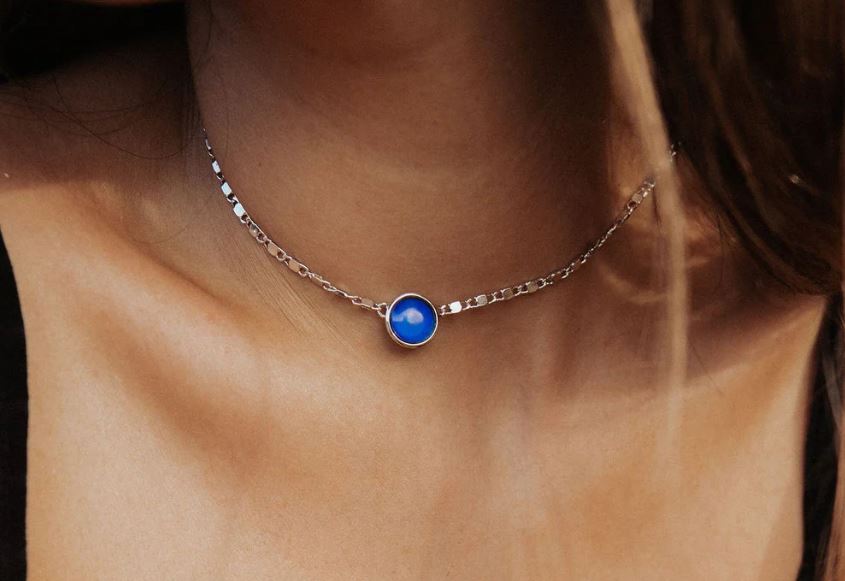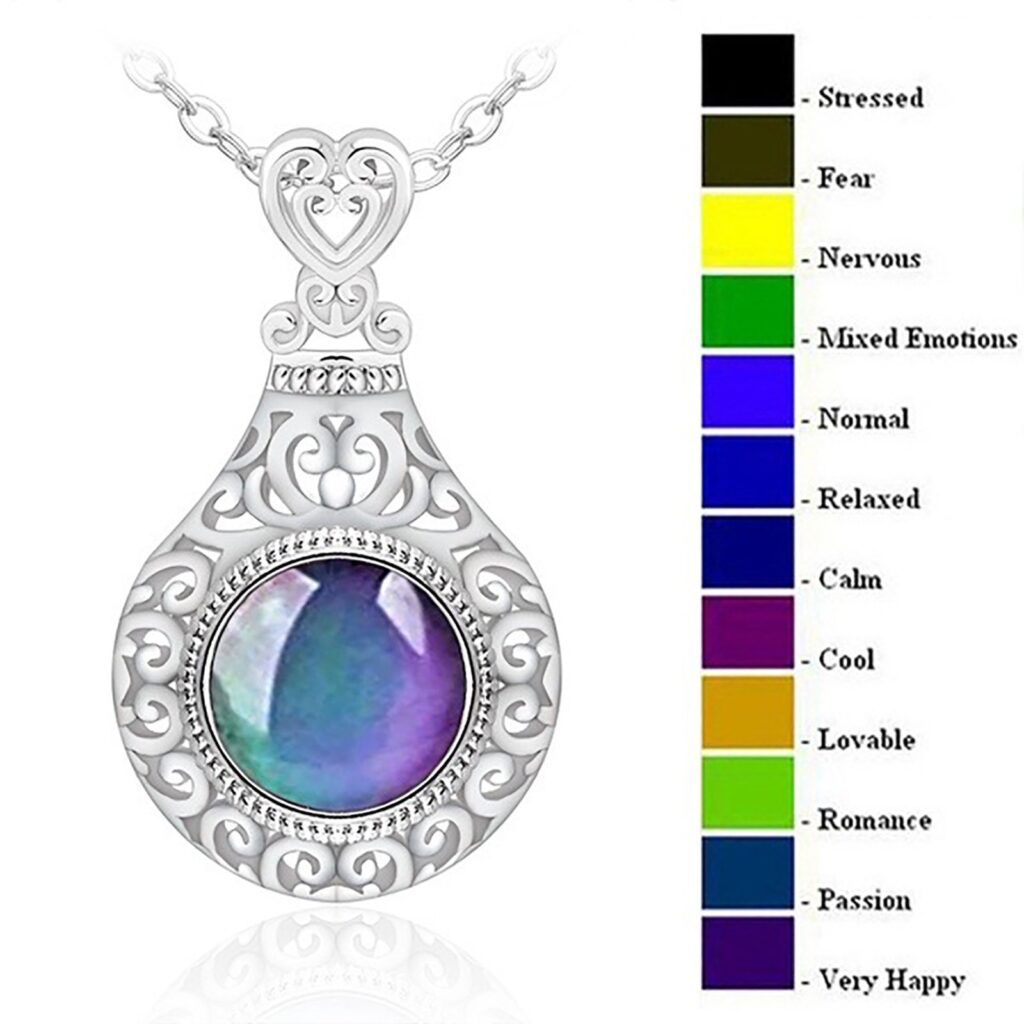What Does Color on a Mood Necklace Mean
A mood necklace is a jewelry necklace that changes color using temperature-sensitive materials to show different feelings of a person at different times. That’s why it becomes very important for every user to get the answer of what does color on a mood necklace mean.
Each color on the necklace matches a different mood or feeling. For example, calmness and tranquility are usually linked with blue, while balance and harmony are shown by green. Red often signifies excitement and other strong feelings.
This necklace is one such example that mirrors the user’s feelings depending on their body’s temperature. In this article we will explain what every color on the mood necklace mean so you can get know-how of your emotions better.
What are the Mood Colors for a Mood Necklace
There are in total six colors for a mood necklace.
1. Red
2. Orange
3. Yellow
4. Green
5. Blue
6. Purple
Apart from these 6 prominent colors, there are some some intermediate colors as well such as White, Pink, Black and Dark Blue.

What Does Red on a Mood Necklace Mean
Red on a mood necklace usually means passion and excitement. It shows that the person wearing it is feeling strong emotions like love, enthusiasm, or even anger. Red is often linked with intense and powerful feelings.
Whenever a mood necklace lights up red, it typically implies individual’s highly energetic or quite assertive emotions. A lot of people regard this color as indicative of physical well-being alongside having else a happy attitude towards the world.
What Does Orange on a Mood Necklace Mean
Orange on a mood necklace typically symbolizes optimism and enthusiasm. When the necklace turns orange, it shows that the wearer feels vibrant, lively, and ready for anything. This color is closely linked with creativity and positive expectations in life.
Wearing a mood necklace that shows orange might mean you are feeling excited or adventurous. It suggests a surge of positive energy, especially when you have the desire to start something new.

What Does Yellow Mean on a Mood Necklace
Yellow on a mood necklace usually signifies happiness and optimism. When the necklace turns yellow, it suggests that the wearer is feeling cheerful, optimistic, and full of energy. This color is often associated with positivity and joy.
Wearing a mood necklace that displays yellow may indicate a sunny disposition or a lively outlook on life. It can be interpreted as a positive sign of enthusiasm and a zest for living in the moment. People often appreciate yellow as a color that symbolizes happiness, optimism, and a bright, hopeful attitude.
What Does Green on a Mood Necklace Mean
On a mood necklace, when the color changes to green, it usually means the person is feeling balanced and stable. This can show as feeling peaceful or steady.
A mood necklace turning green might suggest a need for stability or a feeling of inner peace. It can also mean growth in emotions. People see green as a reassuring color that shows the person’s mood is steady throughout the day.

What Does Blue on a Mood Necklace Mean
On a mood necklace, blue is a sure sign of calmness and relaxation. When the necklace turns blue, it shows that the person is feeling peaceful or tranquil. This color always indicates some level of peace of mind and clear thinking.
People wearing mood necklaces might see blue as a signal to relax or take it easy. They can use it to reflect on their feelings throughout the day. Different people might have different meanings for colors, but generally, blue on a mood necklace stands for cheerfulness and calmness.
What Does Purple on a Mood Necklace Mean
Indications of creativity and imagination are given by purple on a mood necklace. It is said that when a mood necklace turns purple, it indicates that the wearer feels particularly inspired or imaginative. Many painters and writers see this color as a means of artistic expression as well as spiritual awareness.”
If an individual is wearing a mood necklace that indicates purple, there is a good chance he/she is an intuitive person with a strong sense of self-identity or has a craving to express himself/herself. Purple could also be taken as signifying willingness to explore new things and possibilities. Many individuals see purple as a symbol of creativity besides deepening a relationship we have with our innermost feelings and thoughts.

What Does White on a Mood Necklace Mean
White on a mood necklace typically symbolizes purity and clarity. When the necklace turns white, it suggests that the wearer is feeling peaceful, calm, and clear-minded. This color is often associated with innocence and simplicity.
Wearing a mood necklace that displays white may indicate a state of inner peace or a desire for clarity in thoughts and emotions. One of the possible meanings for this might just be that white represents innocence with an opportunity to begin anew. The general belief among many individuals whether consciously or unconsciously, is that the color white signifies peace, innocence, and renewal.
What Does Black on a Mood Necklace Mean
When it becomes black, the pendant typically conveys distrust. As a word, black stands for pessimism, sorrow, or gloom. It is often linked with heaviness or emotional turmoil.
If you are wearing a black mood necklace, it might just mean that you are supposed to find a way of dealing with disturbing emotions or look for help. Black indicates that someone needs to take care of themselves more or look back into some very tough emotional issues.
What Does Dark Blue on a Mood Necklace Mean
A mood necklace’s dark blue color usually implies that you are calm and internally oriented. It hints that the one wearing it feels deeply relaxed or lost in thought when it gets this dark shade of blue. People tend to think of peace and being steady within oneself when this particular shade is used.
One way that wearing a mood ring that appears navy could be seen as needing some introspection or desiring alone time; alternatively, if one wears it when they’re feeling down, then it may show how tough they are in terms of feelings inside themselves. It is generally accepted that royal blue signifies intelligence along with calmness in terms of thought processes.

What Does Pink Mean on a Mood Necklace
Pink on a mood necklace typically symbolizes affection and tenderness. When the necklace turns pink, it suggests that the wearer is feeling loving, gentle, or affectionate. This color is often associated with emotions of kindness and compassion.
Wearing a mood necklace that displays pink may indicate a nurturing and caring attitude. It can be interpreted as a positive sign of emotional warmth and sensitivity. People often appreciate pink as a color that symbolizes love, friendship, and a gentle heart.
Is Mood Necklace Accurate?
As far as accuracy of a mood necklace is concerned, there are mixed opinions among different people. From a scientific perspective the necklace changes its color based on your body temperature and it can be accurate at guessing your mood sometimes. But not necessarily.
For example, if you’re under stress, your body’s blood flow will be more towards internal organs resulting in less blood supply to outer organs such as neck and skin. So that would change the color of necklace.
It must be noted that these mood necklaces are fun to wear and make jokes of it, but when it comes to their accuracy they must not be trusted.
How Much Time a Mood necklace Lasts?
Mood necklace generally lasts for a maximum of two years until the temperature sensitive crystals do not respond anymore. Under such scenario your mood necklace will turn black with no color changings anymore.
Conclusion
In the end, the colors in mood rings act as visual cues for feelings in a way that is fun and symbolic. Normally individuals tend to associate specific moods, feelings, or even emotions with each color. Typically, we associate calmness with blue, green suggests stability while red shows emotion irrespective of whether it is passion or intensity. However subtle differences may appear between personal encounters based on culture.

